Factsheet on Good Practices in Agroecology
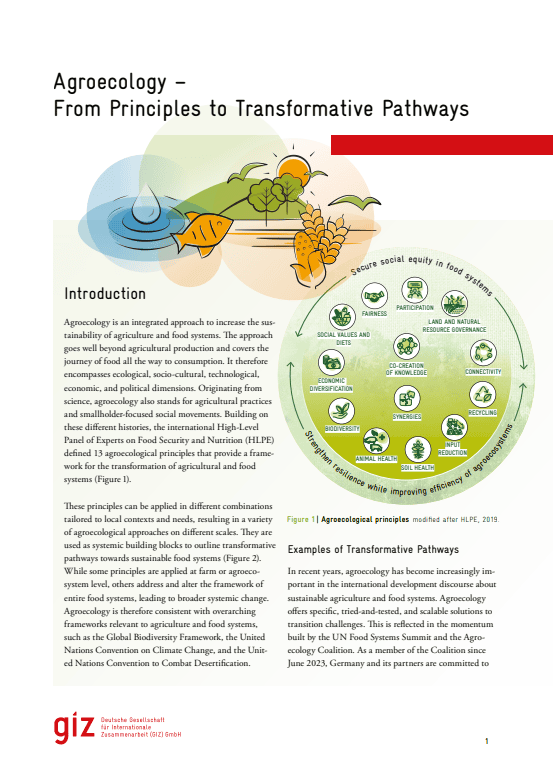
The factsheet “Agroecology – From Principles to Transformative Pathways” gives an insight into how the 13 principles of agroecology can be used to shape a pathway for food and agriculture systems transformation. It compiles five good practices from GIZ projects in India, Mali and Mexico as well as two Global Programmes which are operating in various African and Asian countries. The holistic agroecological approaches i.e. include women self-help groups, multi-stakeholder dialogues, aquaculture, rural youth employment and biodiversity protection – just to name a few.
Factsheet: On the Economic Potential of Agroecology
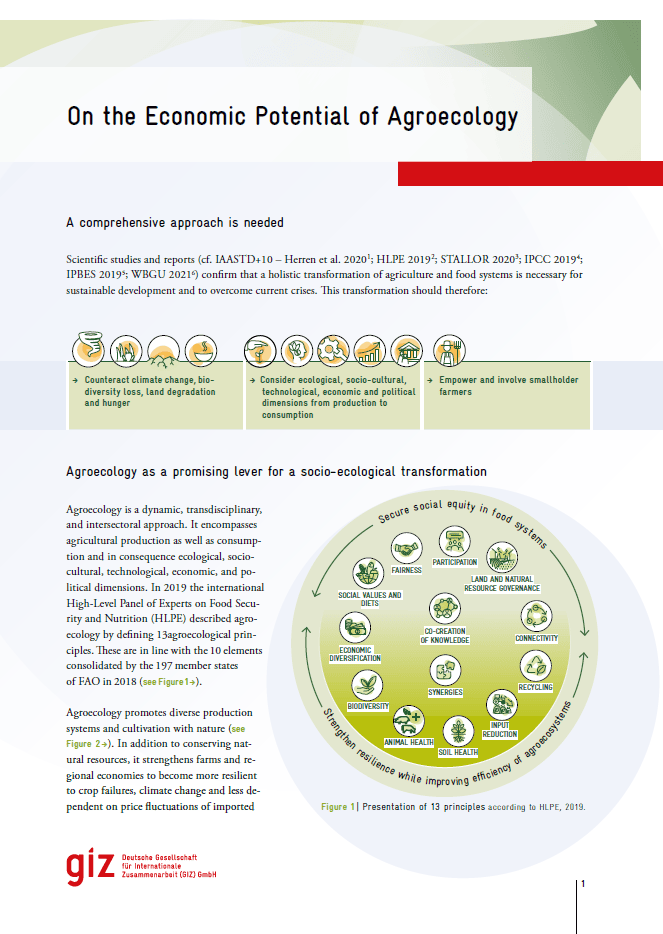
This factsheet gives an overview of the economic potential of agroecology – and shows that agroecological systems can be more profitable than conventional systems, depending on the context. Findings from an exemplary GIZ project underline that agroecology can lead to economic benefits.
Position Paper on Agroecology
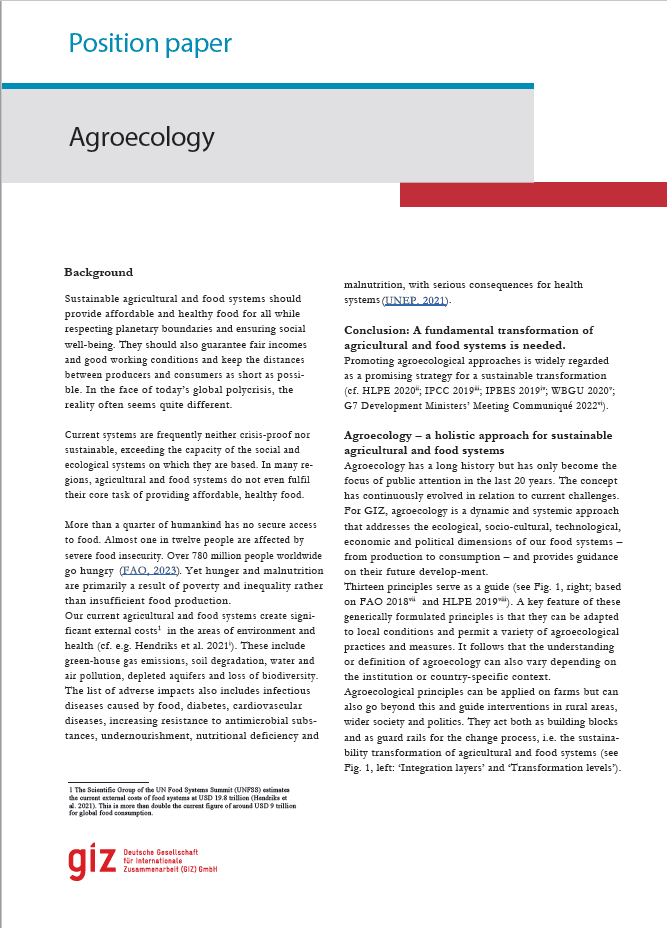
This position paper reflects on the potential of agroecology for a sustainable transformation of agricultural and food systems. It elaborates on five positions, provides a set of recommendations on actions and gives an overview of useful tools and trainings as well as guidelines.
Applying the CRISP tool in Bolivia and Zambia: Identifying climate risks and adaptation options in agricultural and food system projects
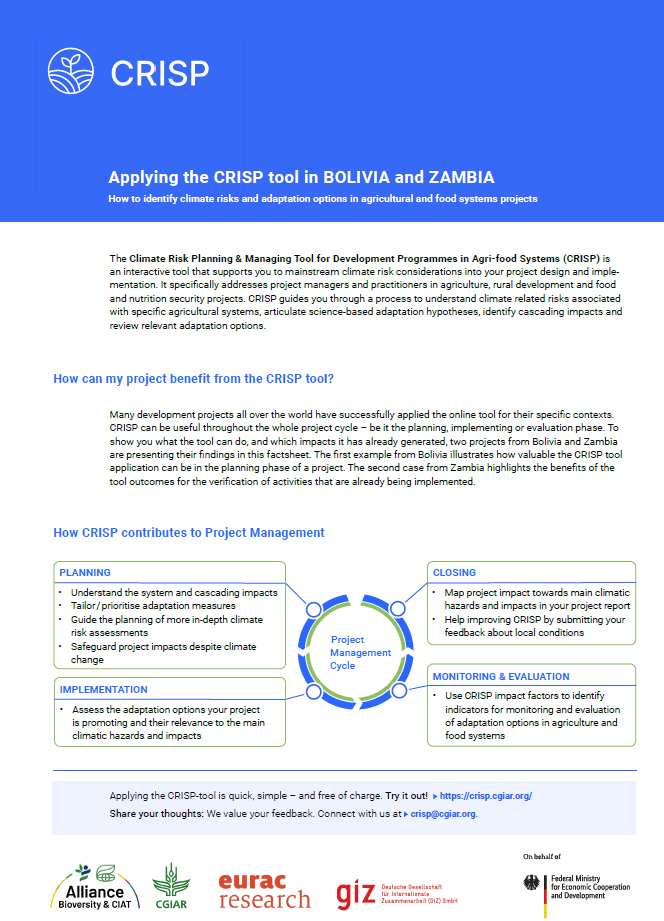
CRISP helps practitioners and policy makers in the agri-food sector to understand climate related risks, and to identify relevant adaptation options for their specific agricultural systems. This publication illustrates the practical application of the CRISP tool in Bolivia and Zambia. To show you what the tool can do, and which impacts it has already generated, two projects are presenting their findings in this factsheet.
Climate Change Adaptation and Mitigation in Agri-Food Systems: A Compendium of Analytic Tools for Practitioners
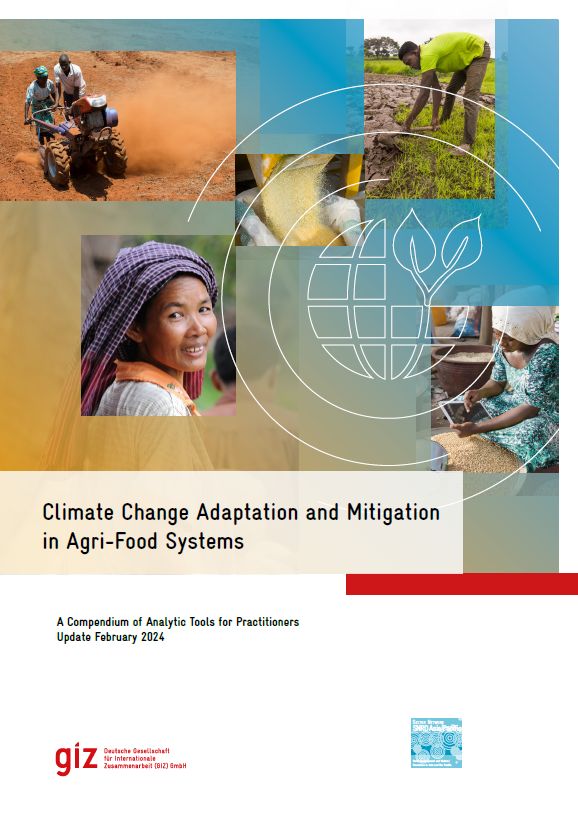
The Compendium provides an overview of the most relevant tools that can be applied to integrate climate change adaptation and mitigation into development projects. It categorizes these tools by level and complexity of application, methodology and target group and prepares the tools for a more convenient application by practitioners. The tools enable entry points for agroecological transformation and identify site-appropriate agroecological practices.
The interactive Product Landscape complements the Compendium and gives a visual overview of and easy access to the tools as well as additional relevant documents.
Biodiversity in global agricultural supply chains
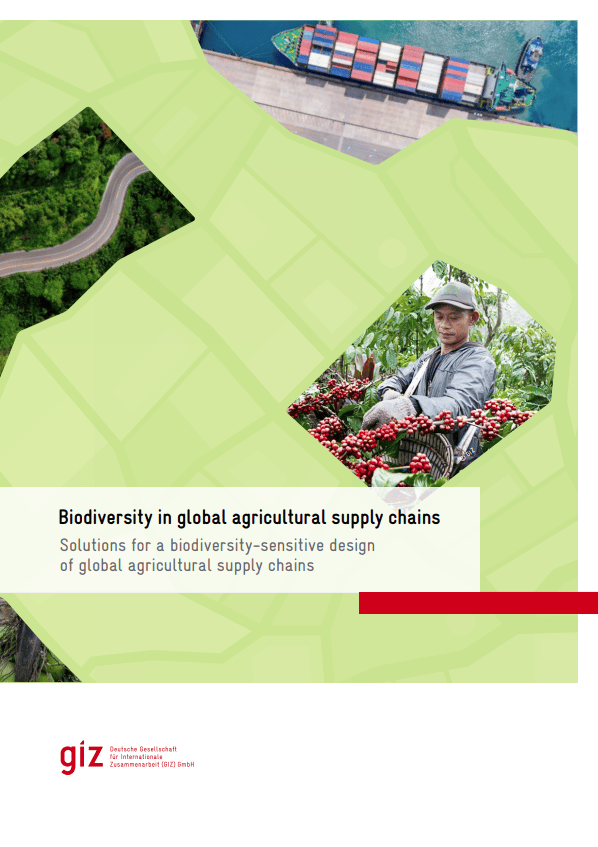
Biodiversity is a fundamental element of people’s livelihoods – and it is declining at a rapid pace worldwide with climate change being one of the main causes.
The paper elaborates how designing global agricultural supply chains in a biodiversity-sensitive way can be a key lever for tackling the biodiversity crisis.
Agroecology as Promising Lever for a Social-Ecological Transformation – Factsheet Agroecology
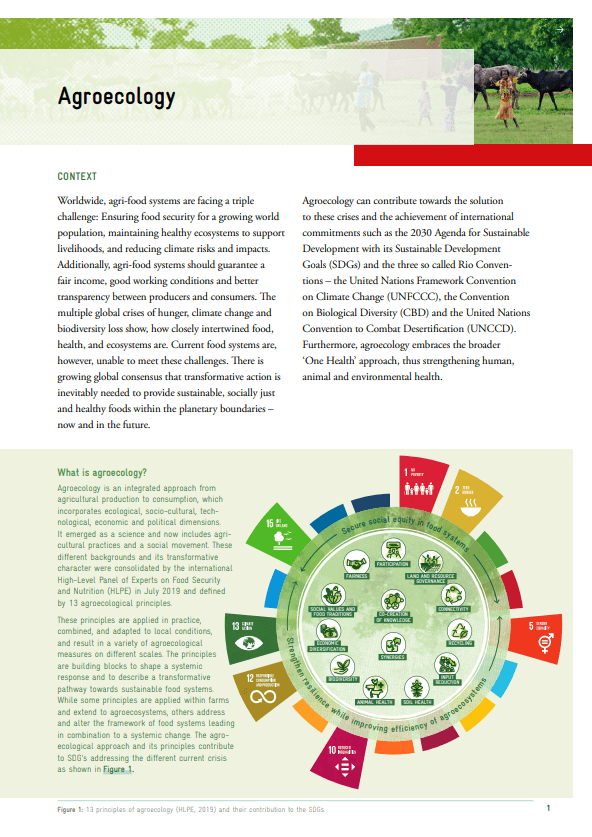
Agroecology is a transdisciplinary and inter-sectoral approach. The factsheet provides an overview on agroecology as a lever social-ecological transformation. It illustrates the relevance of agroecology for future-proof agriculture and food systems using examples from implemented GIZ projects.
Climate Resilient Jobs Perspectives Through Agroecology
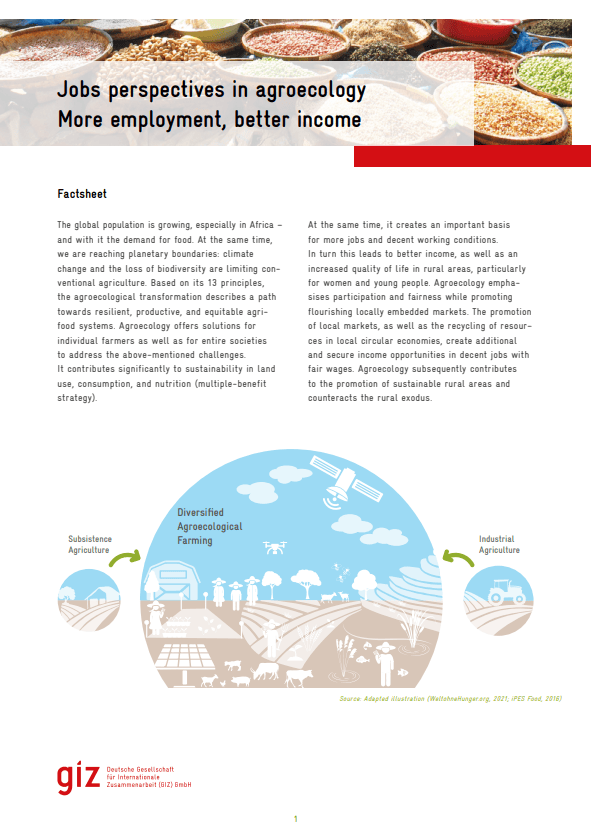
The factsheet illustrates the intersection of agroecology and rural employment. It explores how agroecology fosters climate change adaptation through biodiversity alongside employment promotion. Three dimensions are examined in particular: job creation, sustainable business opportunities and education.
Catalysing Finance and Insurance for Nature-based Solutions
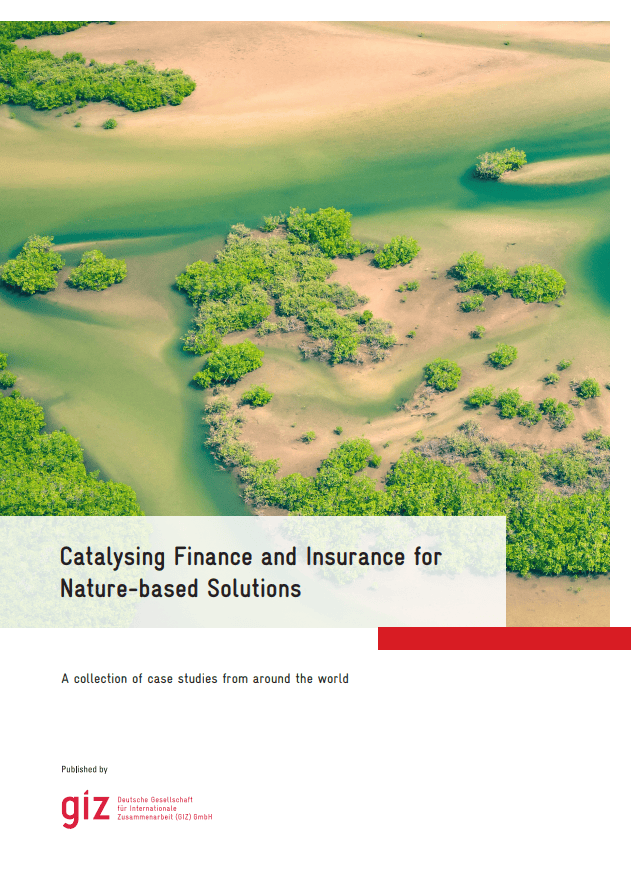
Nature-based solutions can be an effective way to address environmental and social challenges, including adaptation to climate change and nature-related financial risks faced by economies around the globe. Although private sector engagement has picked up, nature-based solutions remain severely underfunded.
Agroecology: Making Ecosystem-based Adaptation Work in Agricultural Landscapes
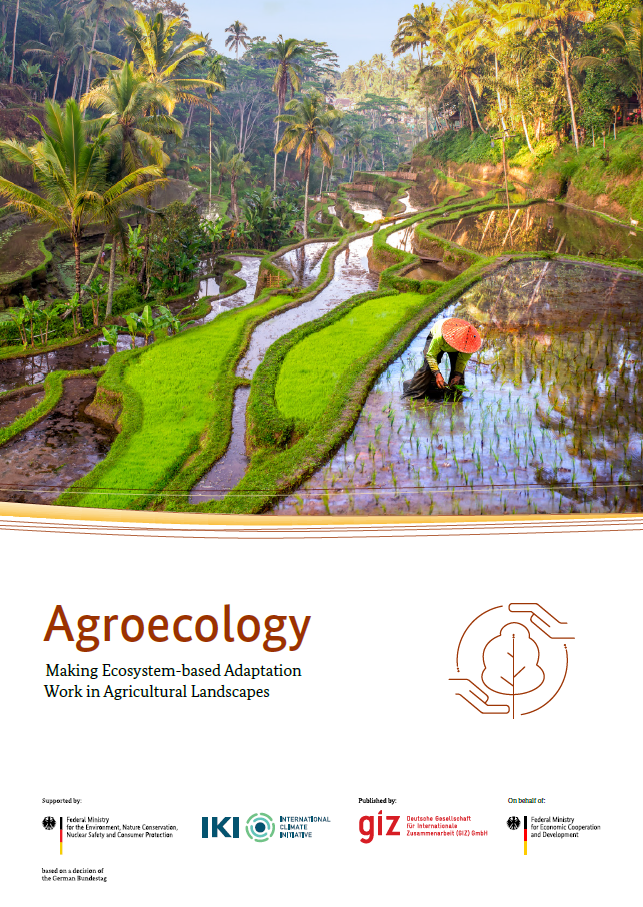
This report suggests to link Ecosystem-based Adaptation (EbA) with agroecological approaches to transform our agri-food systems in a climate resilient and nature-friendly way. It outlines three case studies applying the approach in India, Kenya, and Guatemala, providing practical steps to merge agroecology and EbA to adapt agricultural landscapes to climate change.
